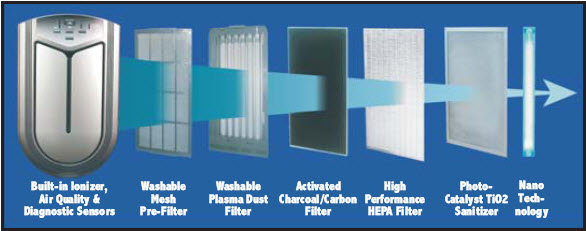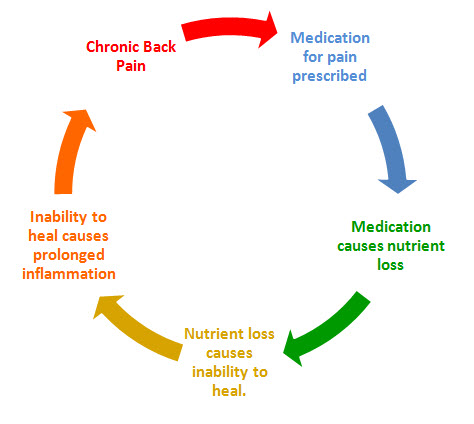An Ultra Affordable Scientifically Advanced Solution to Improving the Quality of Air in Your Home
 Indoor air quality is typically poor inside most homes. As a matter of fact, federal studies have concluded that the air inside your home is more heavily polluted than the air outside. Heavy dust, dust mites, animal dander, disease causing bacteria, molds, fungus, chemical gases from carpet, paint, household cleaners, etc can all pollute the air inside your home. Oxygen is an essential nutrient and is required by your body to function normally at the biochemical level. This means that polluted air can lead to altered functioning of your body’s systems.
Indoor air quality is typically poor inside most homes. As a matter of fact, federal studies have concluded that the air inside your home is more heavily polluted than the air outside. Heavy dust, dust mites, animal dander, disease causing bacteria, molds, fungus, chemical gases from carpet, paint, household cleaners, etc can all pollute the air inside your home. Oxygen is an essential nutrient and is required by your body to function normally at the biochemical level. This means that polluted air can lead to altered functioning of your body’s systems.
- EPA research concludes that indoor air is 5 times more polluted on average than outdoor air.
- There are more than 1,500 recognized environmental air born toxins commonly found in the average home
- Most people spend 90% of their total time indoors.
Health Care Implications of Poor Air Quality
 According to the American Lung Association. Poor air quality in major metropolitan areas contributes to the following problems in the US:
According to the American Lung Association. Poor air quality in major metropolitan areas contributes to the following problems in the US:
- death from respiratory and cardiovascular causes, including strokes
- increased mortality in infants and young children
- increased numbers of heart attacks
- Increased risk of lung cancer
- inflammation of lung tissue in young, healthy adults
- increased hospitalization for cardiovascular disease, including strokes and congestive heart failure
- increased emergency room visits for patients suffering from acute respiratory ailments
- increased hospitalization for asthma among children
- increased severity of asthma attacks in children
- increased cost for the need of asthma medications
Highly Advanced 9 stage filtration process


death from respiratory and cardiovascular causes, including strokes;21, 22, 23, 24
increased mortality in infants and young children;25
increased numbers of heart attacks, especially among the elderly and in people with heart conditions;26
inflammation of lung tissue in young, healthy adults;27
increased hospitalization for cardiovascular disease, including strokes and congestive heart failure;28, 29, 30
increased emergency room visits for patients suffering from acute respiratory ailments;31
increased hospitalization for asthma among children; and32, 33, 34
increased severity of asthma attacks in children.death from respiratory and cardiovascular causes, including strokes;21, 22, 23, 24
increased mortality in infants and young children;25
increased numbers of heart attacks, especially among the elderly and in people with heart conditions;26
inflammation of lung tissue in young, healthy adults;27
increased hospitalization for cardiovascular disease, including strokes and congestive heart failure;28, 29, 30
increased emergency room visits for patients suffering from acute respiratory ailments;31
increased hospitalization for asthma among children; and32, 33, 34
increased severity of asthma attacks in children.35
 Dr. Osborne has arranged for delivery of grass fed milk and butter from 45 Farms. Delivery will be every other Saturday rain or shine promptly from 10-11 am, 45 Farms will have a van in front of Dr. Osborne’s office at Town Center Wellness. If you have any questions please call us or send an email.
Dr. Osborne has arranged for delivery of grass fed milk and butter from 45 Farms. Delivery will be every other Saturday rain or shine promptly from 10-11 am, 45 Farms will have a van in front of Dr. Osborne’s office at Town Center Wellness. If you have any questions please call us or send an email.
















